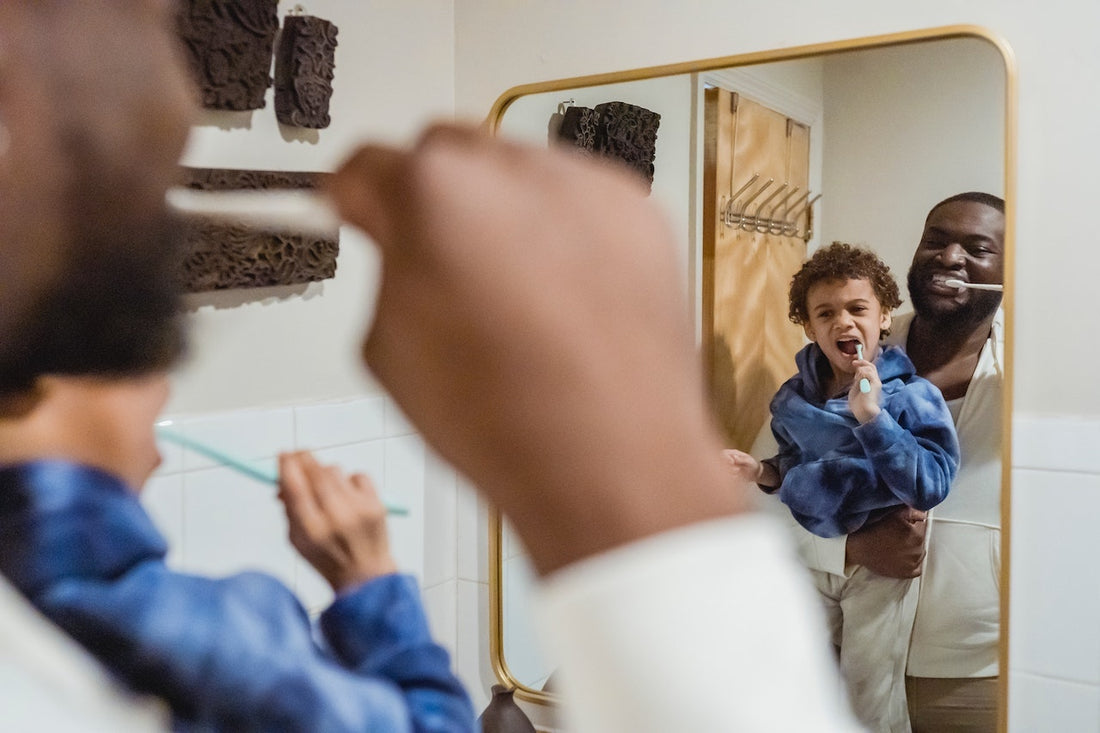
How to Take Care of Your Toothbrush
Share
There are billions of bacteria living in our mouths, and they comprise hundreds of different types of species. These bacteria attach to our teeth, tongue, and other parts of the oral mucosa (e.g., inside our cheeks, lips, and gums). When we brush our teeth, we are only helping to remove the bacteria from the surfaces the toothbrush touches. This means it is important to remember to brush all the other areas in your mouth to ensure as much bacteria is being removed. But, where do these bacteria go after brushing? On the toothbrush! So it is equally important to take proper care of your toothbrush to reduce the bacteria that goes into your mouth when the goal is to remove it!
Taking proper care of your toothbrush is not rocket science and can be done in just a few quick steps and by knowing the simple dos and don'ts.

- Rinse your toothbrush before and after use
Some research studies have shown that toothbrushes are contaminated before use.1,2 Use cold tap water to help remove any existing bacteria before you begin brushing. The CDC and ADA recommend rinsing your toothbrush well with water after you brush to help remove the plaque, oral debris, saliva, possible blood, and toothpaste from your brush.
- Use toothpaste when brushing
Not only does toothpaste help remineralize and prevent cavities, another benefit based on one research study found that oral antiseptics, such as toothpaste or mouthwash, help decrease the number of bacteria that resides on toothbrushes.
- Store your toothbrush in an upright position
By allowing your toothbrush to air dry in an upright position, you are helping reduce the number of bacteria that can accumulate. Research has shown that storing a toothbrush in a closed container when moist creates a hospitable environment for bacterial growth compared to leaving it in the open air. Be sure to protect your toothbrush from other contaminants when traveling. It is best to pack a dry toothbrush in an air-tight seal.
It's also important to store your toothbrush as far away from the toilet as possible to help keep those harmful bacteria, like E.coli, from contacting your brush.

- Replace your toothbrush every three months
Toothbrush bristles must be effective and maintain their shape to remove the bacteria from your mouth. With time and use, the bristles become worn out. When you see the fray, throw it away!
Don't:- Share your brush with others
Sharing is caring, but not in this case. If you share your toothbrush with others, you risk spreading bacteria and other bodily fluids to that person.3 Also, if you store your toothbrush in the same container as others, make sure the bristles are not touching.
By following these steps, you are helping to maintain a good oral hygiene routine, prevent the amount of oral bacteria present, and stay healthy! When looking for toothbrush and toothpaste options, Grin offers a variety of dental products. They even have an On The Go Travel Kit perfect for properly storing your toothbrush when traveling to prevent contamination

About the Author
Kristen Cockrell, MS, RDH. Kristen is a Registered Dental Hygienist with a passion for preventive pediatric dentistry and oral health education. Kristen earned her master’s degree in dental hygiene education at the University of North Carolina at Chapel Hill.
Sources:
- Caudry SD, Klitorinos A, Chan EC. J Can Dent Assoc. 1995 Jun; 61(6):511-6.
- Glass RT, Jensen HG. The effectiveness of a u-v toothbrush sanitizing device in reducing the number of bacteria, yeasts and viruses on toothbrushes. Journal—Oklahoma Dental Association. 1994;84(4):24–28.
- Bunetel L, Tricot-Doleux S, Agnani G, Bonnaure-Mallet M. In vitro evaluation of the retention of three species of pathogenic microorganisms by three different types of toothbrush. Oral Microbiol Immunol 2000;15(5):313-6.
- Frazelle MR, Munro CL. Toothbrush contamination: a review of the literature. Nurs Res Pract 2012;2012:420630.
- Rosema NA, Hennequin-Hoenderdos NL, Versteeg PA, et al. Plaque-removing efficacy of new and used manual toothbrushes--a professional brushing study. Int J Dent Hyg 2013;11(4):237-43.
